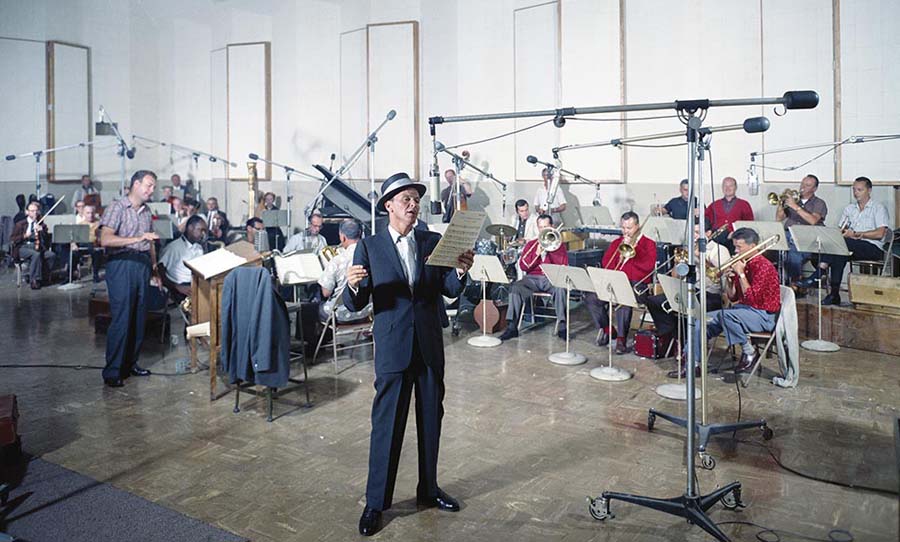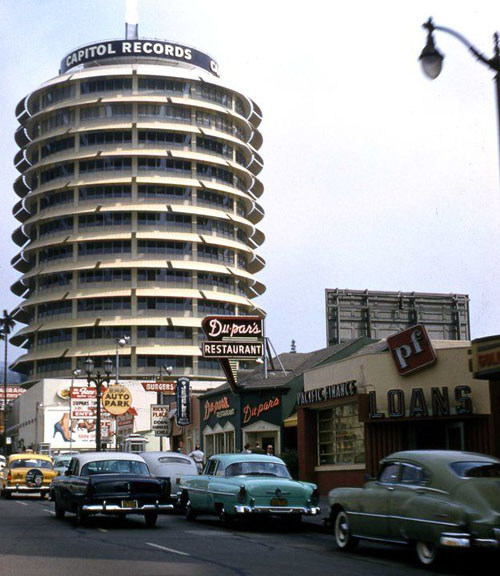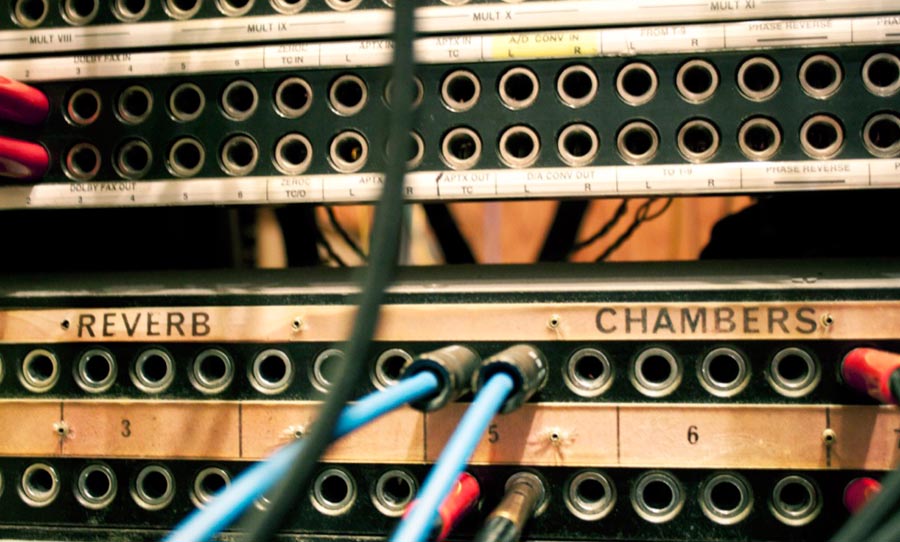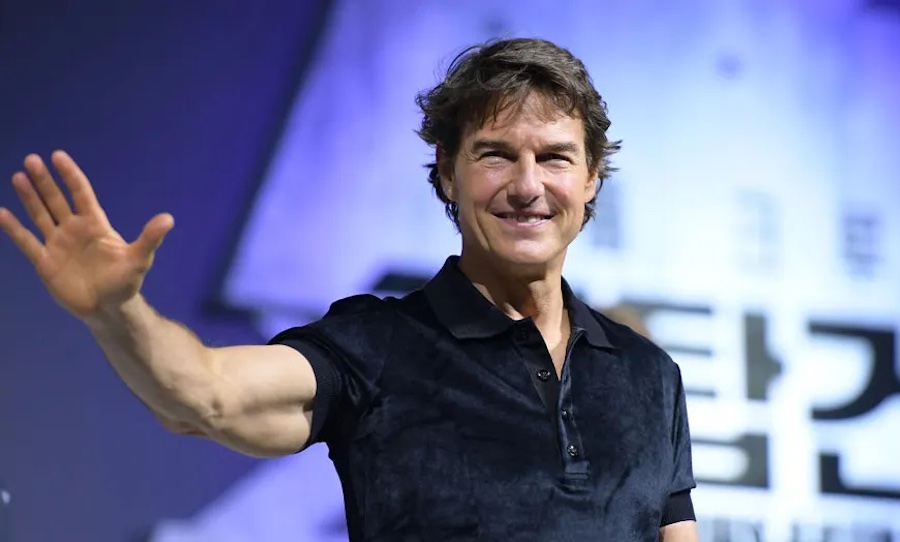Located in a striking Hollywood tower, Capitol Studios doesn’t just embody the glamour of the record industry, it’s also a place where pivotal innovations in audio were born.
Recorded audio has been alive as a medium since the era of the wax cylinder in the late 19th century. It wasn’t until midway through the 20th century that the technology available and the imagination of the engineers and producers coalesced. This was the environment that spurred on the development of Capitol Studios.
Housed in the landmark Capitol Records Tower, the facility is pure Hollywood and mirrors the technological advancements that Hollywood’s film industry is also famous for. More than 60 years into its life, Capitol Studios continues to host the world-famous, but more importantly, artists who seek to tap into a multi-decade history of innovation in audio. 
Born in the ’50s
The Capitol Studios story starts with its equally famous shell. EMI, the company that owned Abbey Road Studios (that would later be immortalised by you know who) acquired Capitol Records in 1955. Wasting no time, the ambitious company set out to make a definitive statement in the heart of Hollywood and the Capitol Records was completed in April 1956.
The building represented a significant power shift in the recording industry in America at the time. Though the Hollywood cinema industry was firmly established, Capitol Records was the first recording company to make its headquarters on the west coast.
And what a statement it made. The Capitol Towers made to embody a giant stack of records was officially made a Los Angeles Historic-Cultural Monument and has enjoyed its fair share of pop culture shout outs, appearing in movies like Earthquake, video games like Grand Theft Auto and film clips like Lana Del Rey’s Doin’ Time. Aside from its status as an architectural icon, the Studios signalled a giant leap forward in recording technology and ambition. 
A Vision for the Future
In 2020, we’re riding the downsizing wave in studios, with many multi-room studio complexes closing their doors. In the 1950s, the trend was very much the reverse. The burgeoning technology magnetic tape meant that sessions could expand and sound quality could improve. But few approached studio construction with the foresight of Capitol.
There were no fewer than four studios (A,B,C and D) in the new complex. Studio A is the big daddy of recording spaces, spanning 250 square metres and able to house an orchestra of 50 players.
And in case Capitol felt they needed to add more gravitas to the opening of this fantastical facility, the first artist to grace the space was Frank Sinatra. He first stepped up to the microphone in 1956 to cut the Close to You album, a record of ballads that showcased the silky acoustic properties of Studio A – a space big enough to accommodate Sinatra and the orchestra at the same time.
The studios were one of the first in the States to record to magnetic tape, and utilise a Neumann U 47, which was a favourite of Sinatra’s. Artists also had access to two Neumann lathes for vinyl mastering (they still offer this service). But even with the versatile recording spaces and breakthrough technologies on offer, there was one headline innovation that continues be a drawcard.
Going Underground
Eight subterranean echo chambers were designed for Capitol Studios by the polymath inventor Les Paul. All the trapezoidal chambers have non-parallel surfaces, capable of yielding up to 5 seconds of pure reverb. The sound coming off tape would be piped down to the selected chamber, sent out into the room via a speaker, recorded with a microphone and sent back to the control room to be blended in with the mix.
It seems like a labour-intensive way to harness the power of sustain, but this was before springs and plates came to the fore. With the already generous and customisable reverb times available in the tracking rooms, sumptuous ambience never heard before was able to be recorded. The celestial blends of The Beach Boys Surfin’ USA, for example, made use of this new mixing technique.
Throughout its history, Capitol Studios continually renewed its commitment to cutting edge sound. Alongside a beyond-impressive roster of regulars, including Nat King Cole, Carole King, George Benson, Prince, Elliot Smith, Mariah Carey, Green Day and too many more to mention, the facilities have been continually upgraded.
Neve consoles have been installed, surround sound mixing has been enabled, the best possible analog to digital conversion is on offer. Yet, you can still use the echo chambers, record with the Steinway that Nat King Cole played and cut a vinyl record, all in the same building.
Today’s records are often recorded in a modular fashion: track beds here, do overdubs there and send it elsewhere to edit vocals. The range of specialty services that can now be feasibly attained is bewildering. Capitol Studios is a place that can do it all. From day one, it’s been a studio at the forefront of the art of sound recording. Bucking the economically rational trends of the modern era, it’s truly a place that can offer the best of new and old worlds.
Check out Capitol Records in all its glory via a live studio recording of Radiohead. Keen on checking out the world’s best-recording studios read here.
For Radiohead poster check out their artist profile here.


